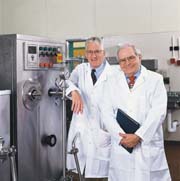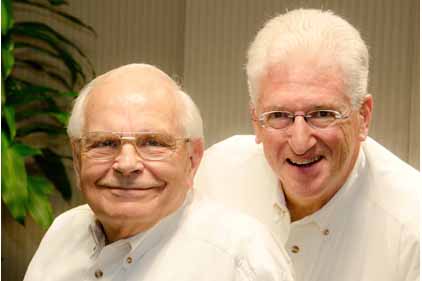
A: With regard to the basic flavor of ice cream, and not changes in amount, quality or type of purposely added flavors and inclusions, the temperature at which ice cream is stored is low enough to minimize the development of all but a few changes. Those that can occur include the development of oxidized flavor, dissipation of cooked flavor and absorption of aromas from the environment
Oxidation of unsaturated fatty acids can produce an off flavor that resembles stale cooking or salad oil. It also has been described as cardboard or metallic.
The development of oxidized flavor can be the result of several factors. Milk, as secreted, can be predisposed to oxidation. Oxidation is accelerated by pro-oxidants such as copper or iron and/or exposure to ultraviolet (UV) light. The development of most oxidized flavor in ice cream comes from using milkfat sources where oxidized flavor has already developed. However, the oxidation of milkfat can occur even at temperatures as low as that of stored ice cream. Thus, oxidized flavor can develop in frozen ice cream even when it does not appear in the unfrozen mix.
When oxidation does occur in the actual ice cream, there are two possible causes. First, some packaging materials allow UV light to pass through. In distribution centers, lighting in cold rooms is often on for long periods, exposing such containers to offending UV light. This can be particularly true for the packaged ice cream at the top of a stack of pallets near the UV light source. Furthermore, retail or foodservice display cases are also sources of UV light.
It is not necessary for the entire package to be transparent in order for light-induced oxidation to develop. It has been observed that ice cream under windowed lids such as those that are sometimes used on round containers, can show both oxidized flavor and bleached color due to UV light. If exposure is long enough, the off-flavor compounds generated under the window migrate into the bulk of the ice cream, tainting the entire container.
Oxidized flavor can also develop during storage even when the ice cream is packaged in opaque containers. This happens when some or all of the milkfat used in the mix is naturally predisposed to be oxidized. Such a predisposition may not be enough to cause oxidation during mix storage, when exposure to oxygen is minimal. However, it can be a factor in finished ice cream where fat globules are intimately associated with oxygen at the fat globule/air cell interface.
Cooked flavor is a milk custard character produced in dairy products as the result of high-heat treatment on milk proteins, which causes the formation of compounds known as sulfhydryls. This flavor is often described as caramelized, or, in extreme situations, scorched or burnt. Sometimes a mild cooked flavor is developed deliberately to impart a readily distinguishable flavor to the ice cream. This is done by exposing the mix to enough heat during pasteurization to generate sulfhydryls. Cooked flavor dissipates with time. Because of that, its intensity diminishes during storage at a rate dependent on storage temperature and the initial intensity of the cooked character. As a result, when the cooked note is used as part of a characterizing ice cream flavor, it is important to ensure rapid turnover of inventory to minimize loss of that characteristic.
Finally, ice cream can absorb foreign flavors from its environment. This includes packaging and the atmosphere in which the ice cream is packaged, stored and distributed. If a container is not tightly sealed and contamination is significant, ice cream can take on the flavor of the absorbed odors. This can be avoided by ensuring the compatibility of the package with the product, minimizing exposure of package and product to offending odors and environments, and by ensuring that packaging is hermetically sound.
Flavor remains a dynamic element in ice cream and needs to be managed accordingly.
Join Bruce Tharp and Steve Young at a 2004 Tharp & Young On Ice Cream program. Technical Short Courses, Workshops and Clinics are scheduled for November 11-13 in Orlando and December 1-3 in Las Vegas. For more information call 610/975-4424 or 281/596-9603 or visit www.onicecream.com.








